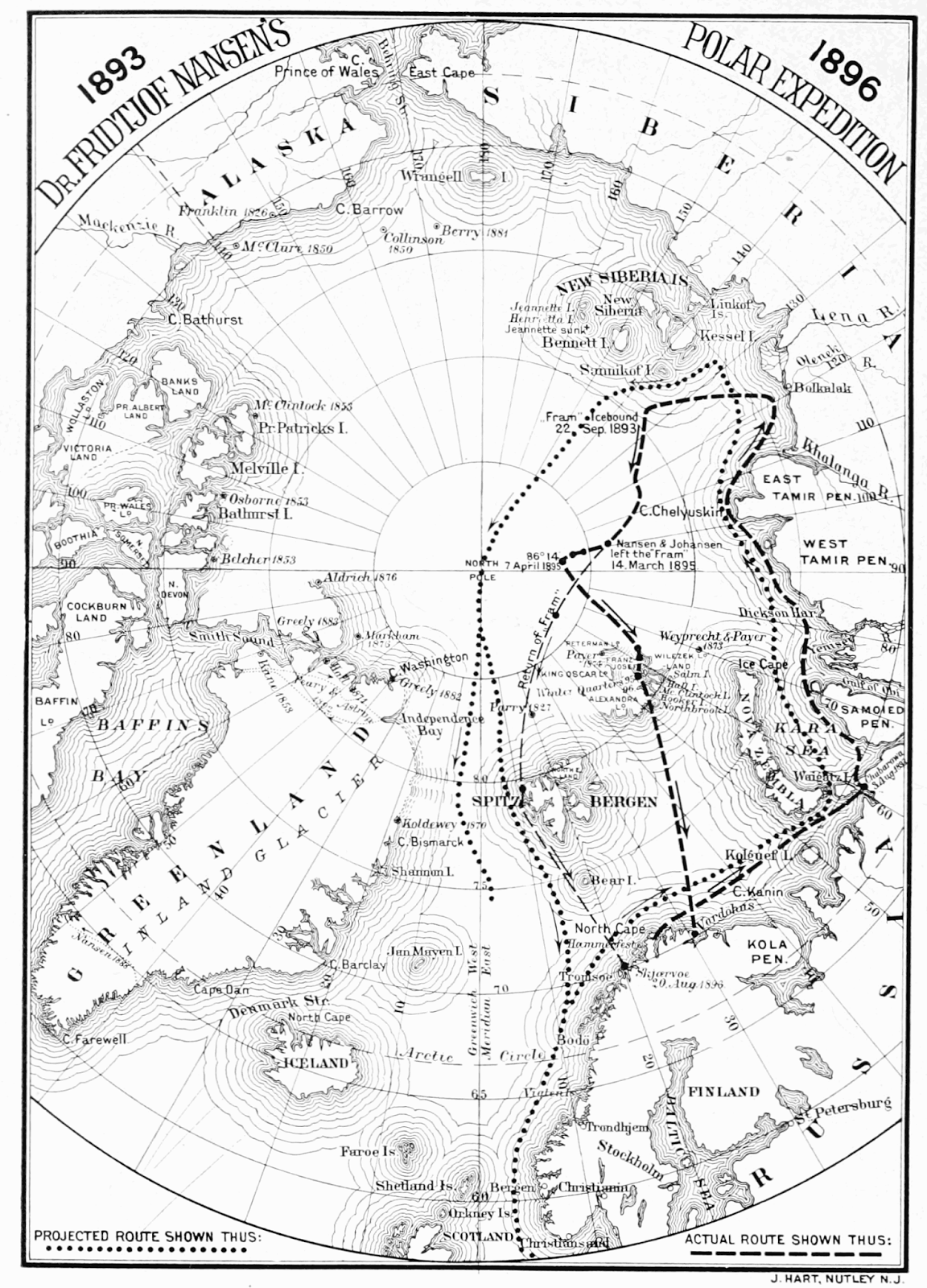 |
| The Fram leaves Bergen, Norway, on July 2, 1893 |
by Charles W. Johnson
author of Ice Ship: The Epic Voyages of the Polar Adventurer Fram (ForeEdge; Oct. 2014)
The golden age of polar exploration is back!
Those glory years of the 1800s and early 1900s when intrepid and sometimes foolhardy adventurers tried to fight their way through the polar ice, north toward the Pole or east-west above the northern continents in search of a shortcut to the Orient—they're back in the news. That era of bold ideas, high adventure, and dramatic failure, worthy of the many tales following in their wake, has come alive for us again, in two new books and an exciting new discovery, all surfacing within weeks of each other.
First, the discovery. One of the most mysterious—and infamous—Arctic expeditions was Sir John Franklin’s 1845 disastrous attempt to find the Northwest Passage (sea route from the Atlantic to the Pacific above North American). Franklin, his crew of 128, and two ships disappeared, stimulating over thirty subsequent but futile expeditions from several countries to find them. Though there has been fragmentary, pieced-together evidence of their torturous journey, details have been shrouded in speculation for over the century and a half. But this September, the Canadian government announced that it had found one of the ships, recently determined to be the the Erebus, lying on the bottom of the Arctic Ocean in 35 feet of water, off King William Island. From this wreck may come important new information about the trials and fates of those unfortunates.
 |
| Nansen's polar expeditions, 1893-96. Click to enlarge. |
But the Jeannette itself did not completely disappear with its sinking. In a cruel yet momentous irony, the Jeannette’s demise—and the lessons from it—led directly to the creation of the Fram, the most innovative, successful, and celebrated ship in polar exploration history. It happens to be the subject of my new book, Ice Ship: The Epic Adventures of the Polar Adventurer Fram.
Three years after the Jeannette went down, bits of it and a few possessions of the crew turned up on a floe off southern Greenland, three thousand miles away across the top of the world. From these battered, translocated clues, Norwegian explorer-scientist Fridtjof Nansen divined what he thought the Arctic was—a vast ocean covered with drifting ice, not the imaginary open ocean or even rock-solid continent the Jeannette was trying to find.
 |
| The Fram, under construction. |
The Fram survived three years locked in the Arctic ice (1893-96), drifting across the Arctic Ocean (to less than 300 miles from the Pole), from north of Siberia, not far from where the Jeannette went down, to popping out east of Greenland. In doing so, it was everything that Nansen hoped and dreamed, dealt with everything he foresaw. It vindicated his controversial ideas and methods. It proved his theory about the true nature of the Arctic and reshaped our knowledge of that vast region. It performed flawlessly and as planned. Everyone returned safely.
The Fram would go on other extended polar voyages and on to further acclaim. From 1898 to 1902 Otto Sverdrup took it on an extraordinary four-year venture in the Canadian Arctic, frozen in four winters, during which over 200,000 square miles lands west of Greenland were discovered, explored, and mapped. In 1910 Roald Amundsen, the first to guide a ship (Gjøa) through the Northwest Passage, unexpectedly took it to Antarctica, staging his famous, triumphant race with Scott to the South Pole.
The Fram, restored and refurbished, now resides in its own museum in Oslo and is visited by tens of thousands each year. Whether you go there to walk its decks, or pick up Ice Ship after you've finished Hampton Sides' book, you will be taken on fantastic, enthralling voyages and adventures of another era, set deep in the vastness of the polar regions.


Congratulations, Charles! This new book looks like an interesting adventure into early polar exploration! I am utterly daunted by the courage and determination of these remarkable seamen!
ReplyDeleteHi Charles - George and I are sending BIG Congratulations to you - your book looks awesome and we can only guess at the effort it took. We're commenting as "anonymous" because we didn't know what to check. Looking forward to reading this soon - Jean and George
ReplyDeleteCongratulations Charles-I bought it today !! The cover looks fantastic. We will all be Framaphiles soon ! Adelaide
ReplyDelete